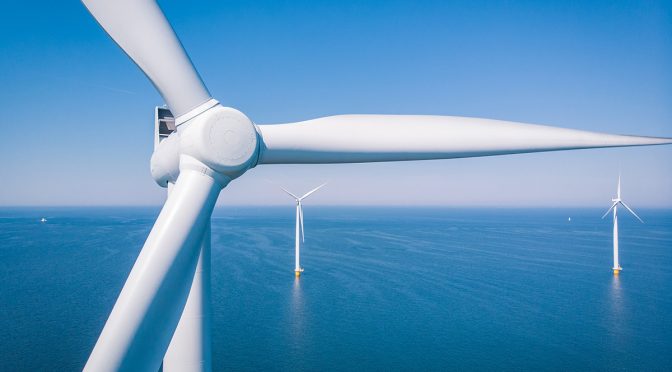WindEurope welcomes the Offshore Renewable Energy Strategy presented by the European Commission today. The Strategy foresees 300 GW of offshore wind in the EU by 2050. Offshore wind is set to be the number one source of electricity Europe consumes by around 2040. The European wind industry is ready to deliver this. But beefing up offshore wind requires large-scale investment in ports, grids and the supply chain.
The EU Offshore Renewable Energy Strategy will shape the development of offshore wind in Europe for the next 30 years. It sees offshore wind in the EU growing from 12 GW today to 60 GW by 2030 and 300 GW by 2050. The European wind industry stands ready to deliver on this expansion.
But the 25-fold increase in offshore wind requires major investment in infrastructure. Huge investments are needed in offshore grid connections and also in the reinforcements of onshore grids. And ports need €6.5bn of investments over the next 10 years. All the equipment for offshore wind farms passes through ports. They need extensive space, heavy loading quays and deep berths. Ports are the hubs for operation and maintenance of offshore wind farms, and they’ll become the assembly base for floating offshore wind.
Europe needs a spound industrial policy to expand its offshore wind supply chain. Today the supply chain produces 3 GW of turbines a year right. In the future it’ll need to produce 18 GW. Innovation and trade policy need to be right too. Offshore wind is now taking off in East Asia and will do shortly in the US. This presents additional export opportunities for the European wind industry.
“This is a very good Strategy. It confirms the vision for offshore wind to be Europe’s number one source of electricity. It’s also spot on in recognising the necessary investments to deliver that – in grids, ports and the supply chain. And it identifies all the right policies that will drive those investments: industrial policy; state aid rules; and the mechanisms to ensure predictable revenues for offshore wind farm developers at least cost to society” says Giles Dickson, WindEurope’s CEO.
“Offshore wind is cheap now but it requires high upfront investments. So minimising financing costs is crucial to keeping overall costs low. Revenue stabilisation is central to this. If banks see stable revenues they lend at low interest. And the Contract for Difference, which many countries are now using to finance offshore wind, is the best mechanism for this. Not least as it reduces costs for Governments: they pay out but the wind farms pay them back when prices are high. It’s very good the Strategy highlights the importance of revenue stabilisation”, says Giles Dickson.
“The expansion of offshore wind will also help economic recovery. 77,000 people work in offshore wind in Europe today. That’ll be 200,000 if Governments deliver on their offshore wind plans for 2030. Each new offshore wind turbine generates €15m of economic activity. The EU Recovery Plan can help support the necessary infrastructure investments, notably in grids and ports. Member States should reflect this in their Recovery & Resilience Plans” says Dickson.
The Strategy makes important points on Maritime Spatial Planning and provides an enabling framework for offshore wind farms connected to two or more countries. These so-called ‘hybrid’ offshore wind farms will play an important role. They save money and space and improve energy flows between countries. The enabling framework for them must be implemented as soon as possible. Up to 7 GW of offshore hybrids are already in the pipeline.
Another good thing about the Strategy is it’s a truly Europe strategy that will enable all European coasts to benefit from offshore wind. It supports the further expansion of floating offshore wind which will be needed for the deeper waters in the Atlantic, Mediterranean and Black Sea – and which will help islands too. Europe has two small floating wind farms today but will have 300 MW of floating by 2022 and 7 GW by 2030. The scale-up needs financial support, which the Strategy recognises.
“It is important to invest in new technologies and innovation. Floating offshore will be up to a third of all offshore capacity by 2050. Now is the time to invest in large-scale demonstration projects to reduce costs. But continued R&I investments in bottom-fixed technology will also pay off. The learning curve is far from over yet” says Dickson.


